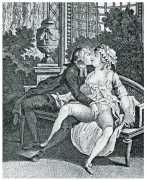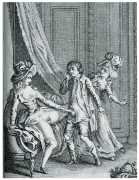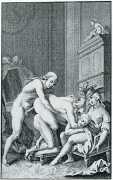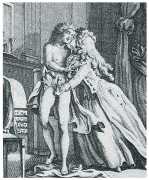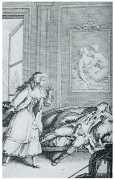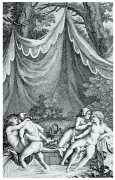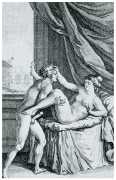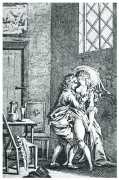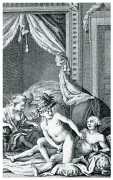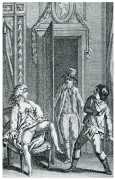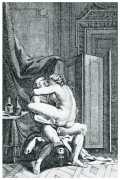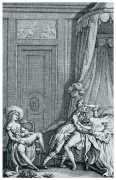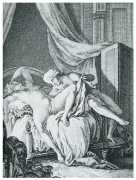La fille de joie; ou mémoires de Miss Fanny, écrits par elle-même (A Woman of Pleasure; or the memoirs of Miss Fanny, written by herself) is of course the French version of the famous Fanny Hill, John Cleland’s groundbreaking 1748 classic. The edition with Borel’s illustrations was by no means the first French translation, the earliest (and very much abridged) having appeared as early as 1751, but the 1776 complete translation, known as the ‘Cazin’ after its presumed publisher, became the standard French version.
A brief note about Fanny Hill’s author shows that Cleland started life as an upright citizen, a King’s Scholar at London’s prestigious Westminster School in 1722, and employed in the British Consular service at Smyrna and the East India company in Bombay. By 1746 he was back in England, but soon found himself serving a prison term in Fleet debtor’s prison. It was while he was in prison that he wrote Fanny Hill, apparently mostly because he was so bored; he certainly never benefited financially from his work, selling the manuscript for £21 to the publisher Ralph Griffiths (under the pseudonym G. Fenton). The first volume appeared in November 1748, with the second volume following in February of 1749. In November of the same year a warrant was issued for the arrest of Ralph Griffiths and John Cleland, but the case for obscenity was never pursued.
Antoine Borel’s illustrations set both the standard and the pattern for erotic book illustration for the next fifty years, with perfectly-engraved curved bodies and the same stylised genitalia, each scene set in an ornate interior or a romantic landscape.


